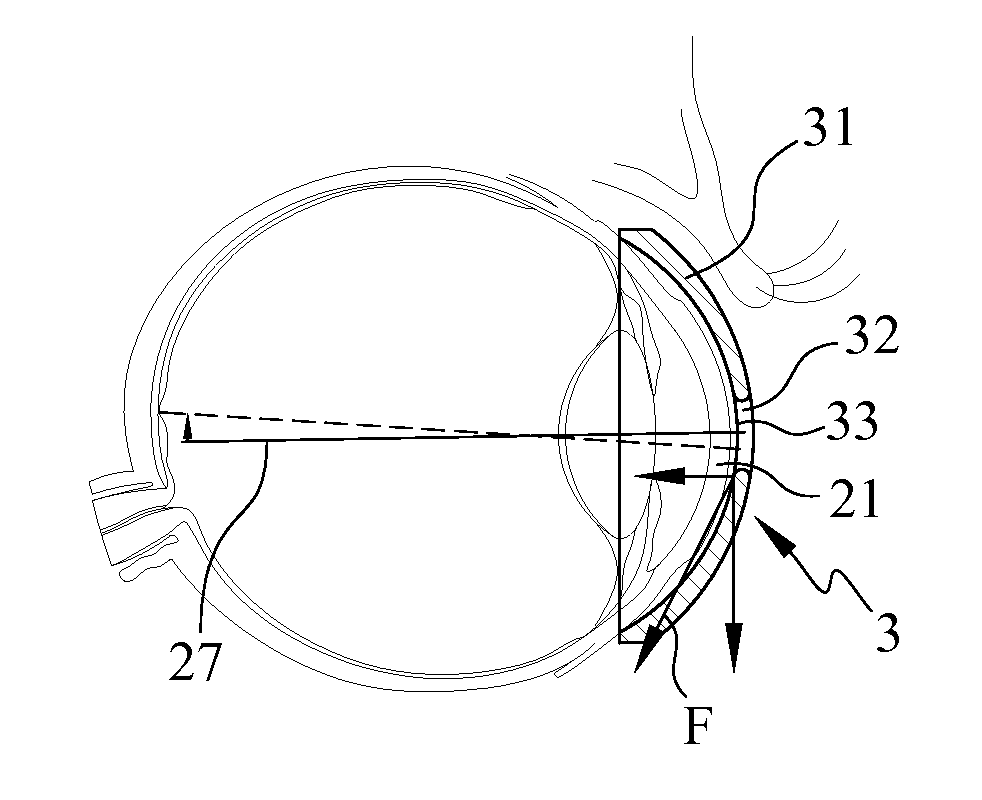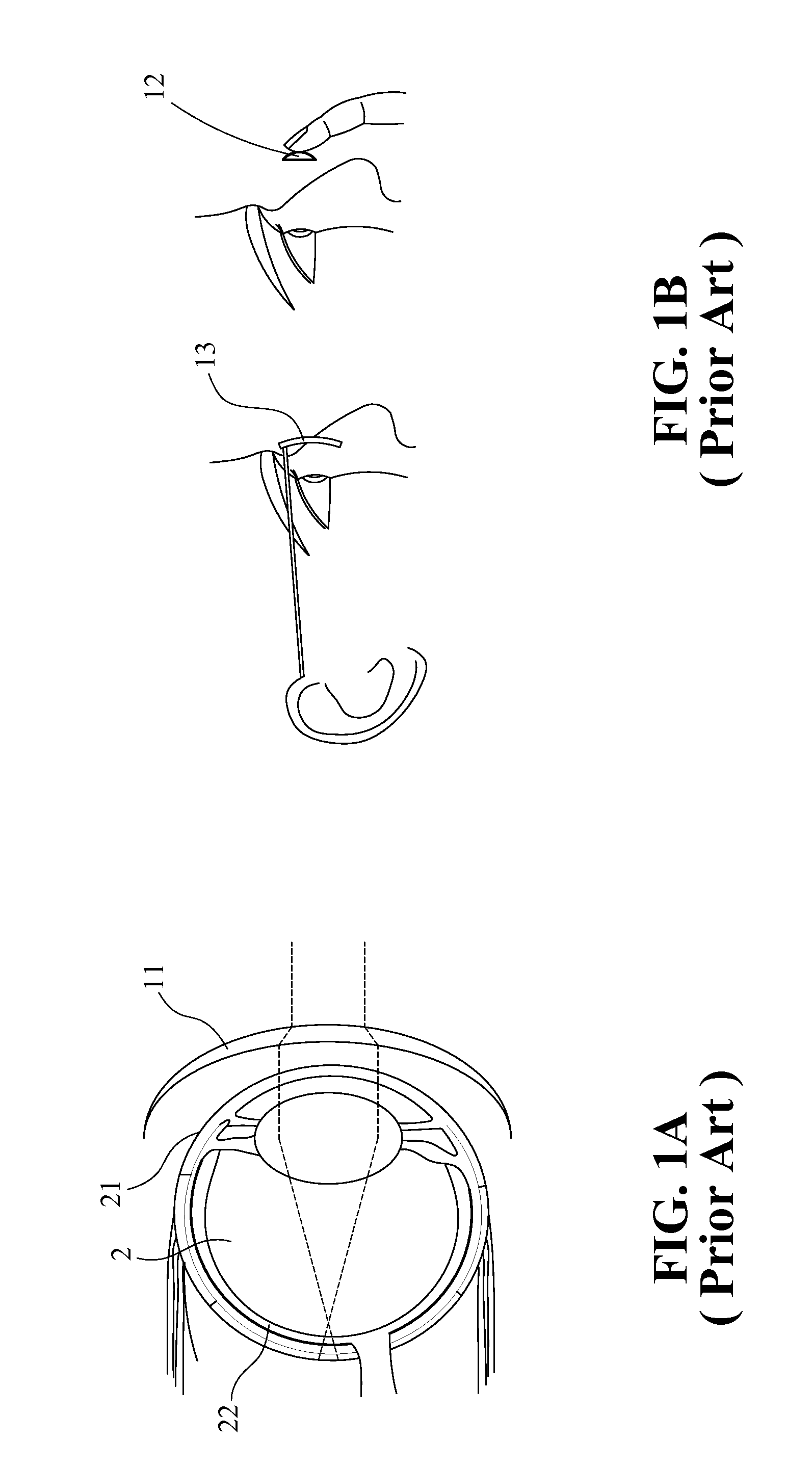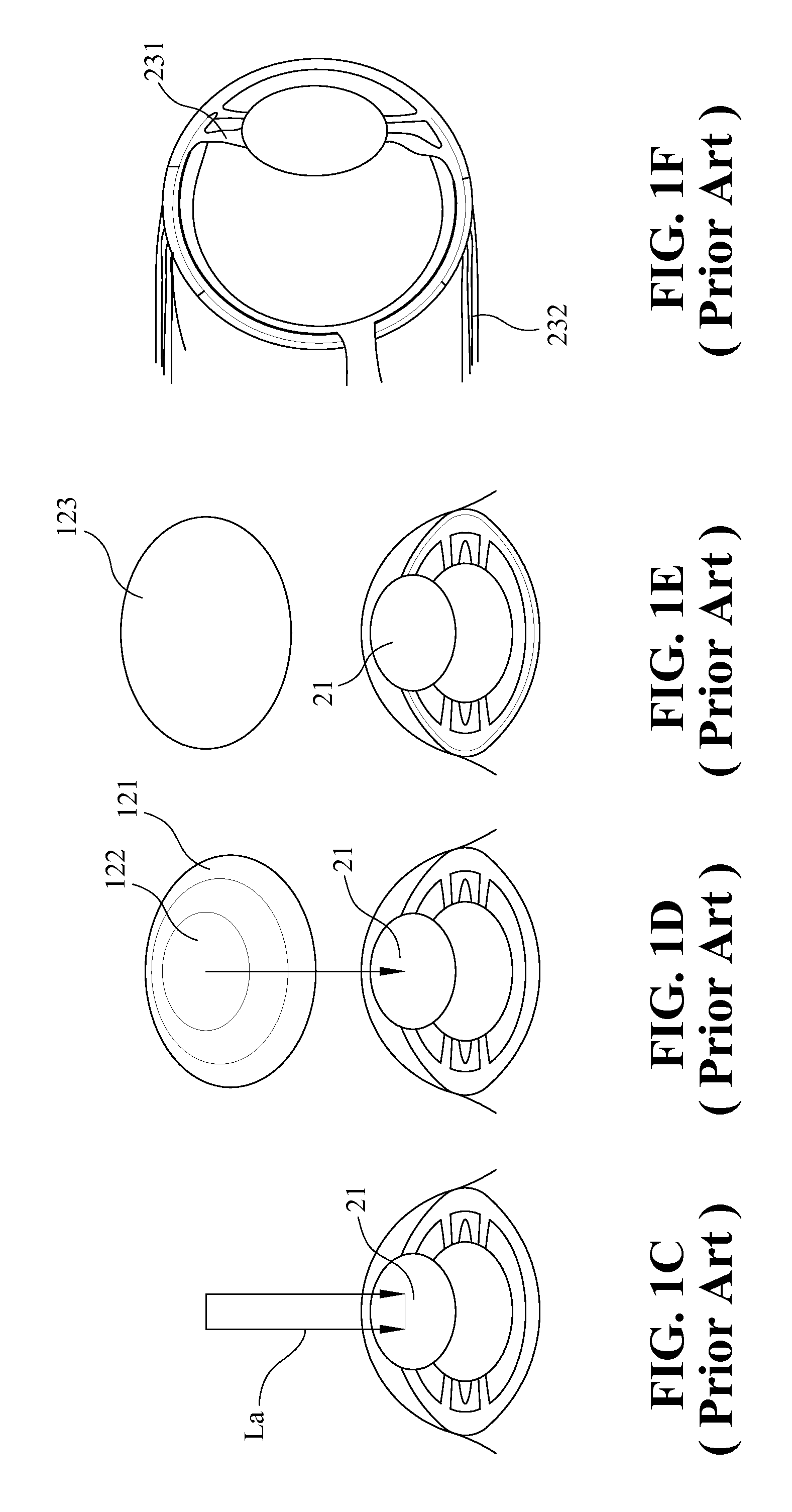Assistive device for aiding vision correction and rehabilitation
- Summary
- Abstract
- Description
- Claims
- Application Information
AI Technical Summary
Benefits of technology
Problems solved by technology
Method used
Image
Examples
embodiments
[0048]The experiment is conducted on 30 individuals to determine whether the biofeedback corrective contact lens can aid vision accommodation. Other effects are not tested. The experiment has to be conducted according to the following steps to obtain correct results.
[0049]1. Correction and vision testing are first applied on bare eyesight / C=initial refraction corrective index. This may be performed by using computer testing or testing frames to obtain the corrected refractive index C.
[0050]2. The biofeedback corrective contact lens is worn for about 60 minutes. During this period of time, the occurrence of eye blinking constitutes the aided vision accommodation A.
[0051]3. External correction and vision testing are applied while the biofeedback corrective contact lens is worn / value B of 20 / 20 correction with test lenses. A+B=C is the equation that verifies the ability of aiding vision accommodation. If the test result is:[0052](1) light myopia A=C (no further correction and vision te...
PUM
 Login to View More
Login to View More Abstract
Description
Claims
Application Information
 Login to View More
Login to View More - R&D
- Intellectual Property
- Life Sciences
- Materials
- Tech Scout
- Unparalleled Data Quality
- Higher Quality Content
- 60% Fewer Hallucinations
Browse by: Latest US Patents, China's latest patents, Technical Efficacy Thesaurus, Application Domain, Technology Topic, Popular Technical Reports.
© 2025 PatSnap. All rights reserved.Legal|Privacy policy|Modern Slavery Act Transparency Statement|Sitemap|About US| Contact US: help@patsnap.com



